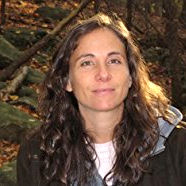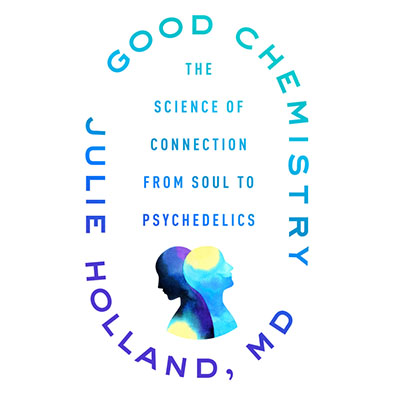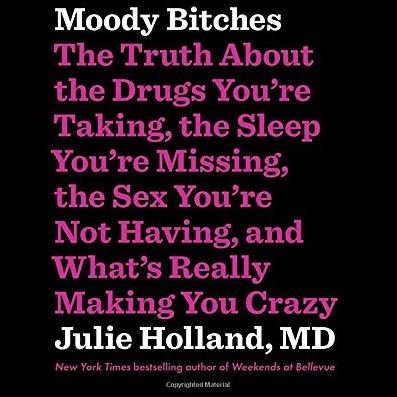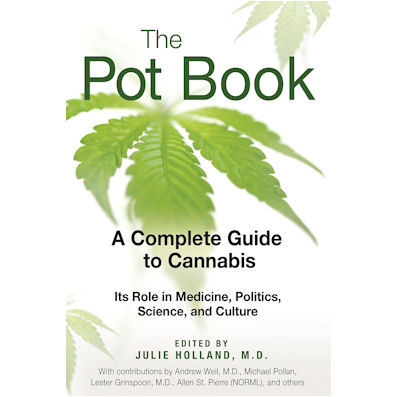Ecstasy Guide

Sample Chapters
Additional Chapters
Additional Chapter: MDMA-Therapy in Switzerland
by Juraj Styk, MD
"We lie wrapped in sleeping bags in a circle on our mats. The sounds of clearing throats, coughing, and the occasional gagging, gradually cease. It gets calm and quiet, only the monotone rhythm of the tambura fills the room. The stretching exercises allow me to feel the painful tensions and contractions of the thigh flexors. Through the shaking of the feet a pleasant warmth begins to rise in the legs. I feel an extraordinary tingling along the spine, starting at the tailbone. With every deep breath I take, I relax more. I am now all breath, I sense how my chest rises, opens with each breath, how the abdominal wall rises and falls. An incredible calmness spreads within me. It is as if time were standing still; all processes - even perception and thought - are slowed down. Only the rhythmic breathing reminds me of life and time. In this moment of calmness I think about the foolish rush, anxiety, tensions, and guilty feelings. The music triggers scenes from my childhood to unfold before my closed eyes. In time I feel nauseated, and a sharp pain under my left shoulder reminds me of a painful subject that will need to be examined more closely. I drink water and, later on, warm tea. As the effect of the medicine slowly begins to wear off, we all gather to sit in a circle. The closeness, the openness, and the readiness of the participants to share even heavy subjects, touches me deeply. We are silent again. I sense a great force, a strong energy in the room."
Above is a brief excerpt from one of my transcripts of a psycholytic self-exploration with MDMA conducted in the context of the Swiss Physicians' Society for Psycholytic Psychotherapy (Schweizerische Aerztegesellschaft fuer psycholytische Psychotherapie, SAPT, founded in December of 1985). I received the first information about MDMA during the conference of the European College for the Study of Consciousness (ECSC) organized by Professor Leuner. During further ECSC-conferences we (Baumann, Roth, Widmer, Styk) were able to present data from different therapeutic settings. I reported on LSD-therapy with a terminal cancer patient and attempted to evaluate our other therapies. Our efforts were fruitful: in the fall of 1988 five members of the SAPT were given special authorization for therapy with MDMA and LSD by the Federal Office of Health Services. (Unfortunately, one member who had been given authorization to work with psilocybin, died; therefore we were unable to evaluate his work retrospectively.)
In his scientific studies regarding the effect of mescalin, Beringer (1927) proposed that it is important for the psychiatrist to achieve a better understanding of the experience of the altered consciousness, the psychopathology of perceptual alterations, and changes in temporal processes. Stoll (1947), in his first clinical publication about the effect of LSD, revisited Beringer's original idea and recommended that young psychiatrists should ingest this substance for didactic purposes in order to directly experience the psychotic contents. The psychoanalytically oriented psychiatrists in England have emphasized another aspect of the so-called "self-experimentation", namely the systematic processing of unconscious contents, i.e. the flash-like remembrance of childhood experiences. For this reason, Sandison (1991) then called this form of accelerated psychoanalysis "psycholytic therapy." It is about lysis,(breaking down or breaking apart), about systematic work on different layers of repression. In the German-speaking realm the works of Hanscarl Leuner have significantly contributed to the advancement of psycholytic psychotherapy. As psychotherapeutically working psychiatrists we knew that lively learning could only take place through self-exploration. In the years 1986 to 1988 we met three times, and later twice a year, for a weekend of self-exploration. In order to process the experience, and to inform the other participants, as well as with a scientific evaluation at a later date in mind, we decided that each participant had to write a transcript of the session. The contents of the transcript were: (mental/physical) condition one week before the self-exploration, preparation for the group session on Friday night, contents of dreams in the night before the session, description of the circumstances of the setting, perception of the opening ritual, the meditative and the interactional part, the effects of the drug experience on that day, on the following day, and up to one week after. The transcripts were sent to all participants. Time and again there were reserved transcripts that indicated that the author had to struggle with fear and mistrust. It also became obvious that it was hard to put into words these spiritual or transpersonal experiences, but many transcripts were authentic, courageous, and original. Aside from the self-exploration weekends there were sessions of the research group and a supervision with Stanislov Grof. During the board meetings there was a friendly atmosphere, conflicts were addressed and sometimes resolved, and we gathered strength for our difficult negotiations. The feeling of community became stronger for these psychiatrists who were practicing in different cities in Switzerland. The Zurich dissertation by E.Benz (1989) revealed very clearly that the members of the SAPT, trained psychiatrists and psychotherapists, had different focuses when it came to further education. However, the majority was influenced by the humanistic psychotherapies as well as the body-oriented therapeutic methods. We all had in common the expansion of psychotherapy for personal growth, and the existential themes of birth, the meaning of life, and death.
From my point-of-view the first years of our Physician's Society were extraordinarily intense. Everyone brought their own temperment and personal style to the proceedings. We gave ourselves an organizational structure; however, from a perspective of group dynamics, we were a leaderless group. We recognized that we were a group of pioneers using a powerful substance that urges one towards personal growth and development. I sensed that I not only learned how to integrate of several psychotherapeutic methods, I also discovered a new dimension in my life and was very happy that my wife participated with interest. In order for a peer group not to get lost in rivalry, power struggles, or fruitless theoretical discussions, it has to establish some rules and make binding agreements. It took a while for our group to clarify the question of power. Who is responsible for the substances? Who for the choice of music? How will the session be structured? For the self-exploration sessions to go well it was necessary that different leaders took turns in facilitating one weekend each. They chose the structure for the session that seemed appropriate to them, thereby acting out their power transparently. Now, when we look back in retrospect and compare the disciplined course of the experiences in later years with those in the first years, we see that because of our initial enthusiasm we failed in part to work on the manyfold forms of fear. The self-exploration in the context of the SAPT was a very important practice process for us, with negative and positive experiences. My own bad experiences were also important. They helped me to avoid many things in my own practice. For instance, the integration phase of the third day, as well as the subsequent continued analytic work together with my wife Sonja, were of crucial significance. This allowed us to systematically work through the material that emerged from the regression. This was not always the case in the SAPT because we did not take enough time for it. For integration, the participants had to rely on their own supervision or therapy. Our adult side compelled us, for instance, to defend against the fear of loss of control, powerlessness, shame, etc. The regression-promoting work - with MDMA, for example - the opening of feelings, of the heart, of spontaneous, childlike reactions, which was so important for our patients, we hardly allowed ourselves to experience. The various forms of expressing defence were perceived and interpreted. But not only interpretations were needed, also direct support with looks, words, touch, and being held, etc. Those were sometimes very intense processes that necessitated the support of other group members. Fascinated by the experiences under the influence of MDMA, the doors to the heart, to intuition, to loving conduct with one another, opened in everyday life as well. Our work raised quite a bit of interest, younger colleagues called us, and the necessity arose to offer some kind of training and to structure the self-exploration in a different way. In the year 1990, the old participants tried to resolve their conflicts in a drug-free plenum. On the one hand we sensed that we were on the right track to open our hearts, to face our fears, and enter into deep friendships. On the other hand some of the emotional injuries had not been processed yet. I discovered in myself as well as in some of my friends that we had become more empathic, self-confident, and had a better sense of humor, in our private as well as in our professional lives. During this time we learned a lot about the transpersonal dimension through our work with substances in higher dosages. With practical experiences we were able to confirm the theory of the perceptual spectrum, thus transcending the work on personal problems and moving on to further dimensions. The fruitful time of our work lasted four years. In the summer of 1990 it happened that - due to a fatality in connection with a related substance - the special authorizations we had received from the Federal Office of Health Services were withdrawn. Thanks to intensive personal negotiations we were able to again receive a limited authorization. It has to be mentioned here that only at this time were we given the condition to present a scientific evaluation of our work. Until the summer of 1990 we saw ourselves as practicing psychiatrists who had a special authorization for psycholytic therapy. We obeyed the law by providing narcotics control to the Federal office. The attempt to evaluate our work scientifically was interesting for me and some of my colleagues, while for others it was a difficult, even impossible undertaking. For our research it was necessary to found an ethics commission that was specifically competent for this task since no university ethic commission was responsible for us practicioners. A few dedicated women and men were willing to examine our plans. My last draft for a pilot study could not be examined by the commission yet because the professional objections had to be processed first. Peter Gasser took on the difficult task of evaluating the case histories of Marianne Bloch's, Samuel Widmer's, and my patients, and developing a questionnaire. His study was published by the Swiss Archive for Neurology and Psychiatry (Schweizerisches Archiv fuer Neurologie und Psychiatrie 147.2/96). This was a follow-up study on 121 patients. The duration of the psychotherapy was three years on average. During this time there were an average of 70 psychotherapeutic sessions in the form of individual or group psychotherapy, and an additional 7 psycholytic sessions, which means that the 121 patients underwent a total of 818 psycholytic (drug-assisted) sessions. The duration of the follow-up was on average two years. At the time of the retrospective evaluation, 90% of the patients described themselves as "slightly improved" (26%) or "well improved" (65%). During the psycholytic therapy there were no severe incidents, no suicides, and no psychiatric hospitalizations. The very high return rate of the questionnaires showed us that we were able to continue the warm relationship with our former patients. The majority responded openly and spontaneously. The experience of a hitherto unknown intensity of perception, the strong feeling of love and connectedness with oneself, with others, and with the universe, constitute the special qualities of psycholytic psychotherapy. The progress that could be detected in the retrospective evaluation was:
(1) improved self-acceptance, (2) enhanced feelings of self-esteem, (3) reduced fear and psychosomatic complaints.
[Editor's Note: Peter Gasser's data was presented in the MAPS Journal Volume 5, Number 3, 1995, pp. 3-7. He reviewed the patients of three therapists, who all used MDMA, but two of the therapists had some later sessions with LSD, in doses ranging from 100 to 400 micrograms. The average duration of therapy was three years. The impact of the psycholytic sessions was greatest on the patients' emotional lives. The percentage of patients who said the sessions were very important emotionally was 64.5%, were important for their interpersonal relationships was 56.2%, for producing important biographical insights was 48.8%. The experience that was rated as very important to most people was one of unity and complete love, reported by 71.1% of the respondents. Fully 84.3% of the patients reported an improved quality of life, with 3.3% reporting a worsened quality of life. Better self-acceptance was reported by 81.8%. Improved relationships with family were reported by 81% of respondents, worsened by 3.3%. Involvement with work was reported as improved in 57%, worsened in 2.5%. About seven of ten patients (73.6%) said that they had a better approachto the Divine, .08% felt their approach was worse. About six of ten (57.9%) felt less fear of death, 1.7% felt more fear. Virtually no patients reported an increased use of drugs after the therapy. Nicotine was used more frequently by 3.3%, cannabis by 1.7%, and alcohol by 1.7%. On the other hand, a substantial number of patients reported a decreased use of drugs. Nicotine was used less frequently by 20.7%, cannabis by 7.4%, and alcohol by 19.8%.]
Strict scientists are skeptical regarding the results of this retrospective study. We psychiatrists were able to conduct clinical research in our practice, even if the experts in the university clinics doubt that. They accuse us of structural and methodological flaws and mistakes. Because we want to learn from our mistakes so that we can avoid them in the future, we have to learn to gratefully accept when others benevolently point out our mistakes. However, in the last years, the forms of debate were anything but benevolent, but we know that we have helped many patients with our method. MDMA or other psycholytica are used to establish a unique therapeutic atmosphere in which, by overcoming mistrust, fear, shame and inhibition, a special experience in an altered state of consciousness unfolds. This experience is further discussed and integrated in the subsequent psychotherapeutic process. Since the authorization for the pilot study was not given, the psychologist who was supposed to have conducted this study with my clients decided to choose a different subject for her dissertation. After our lack of success regarding the authorization for a prospective clinical study it was very encouraging for us to hear that in the USA authorizations for research had been given. Our American friends, Charles Grob, Richard Yensen, and Richard Strassmann, have declared that they have benefited from our efforts in Switzerland. Even though the experiences of our group only have anecdotal value among scientists, they are unique and of important significance: substances that have been given a bad name, such as LSD, or a new chemical compound, such as MDMA, have been used psychiatrically, psychotherapeutically, and examined by experts under legal circumstances. The interdependence between those who make mistakes and those who help correct them is necessary. But we have to be allowed to make mistakes after all; we will certainly not repeat the old ones. We need an open, critical attitude towards our own ideas, but without rationalization, relativism, or skepticism. What we need more than anything, however, is not to lose our courage, the ability to make decisions, and the willingness to stand up for our own convictions. We know that - despite many difficulties and setbacks - the psychedelic experiences of the last ten years were an important, meaningful, and productive period in our development.
(Translated from German by Katrin Krollpfeiffer)





